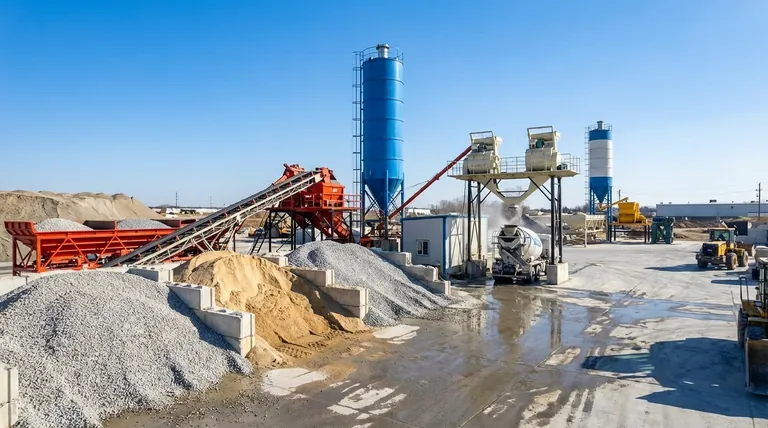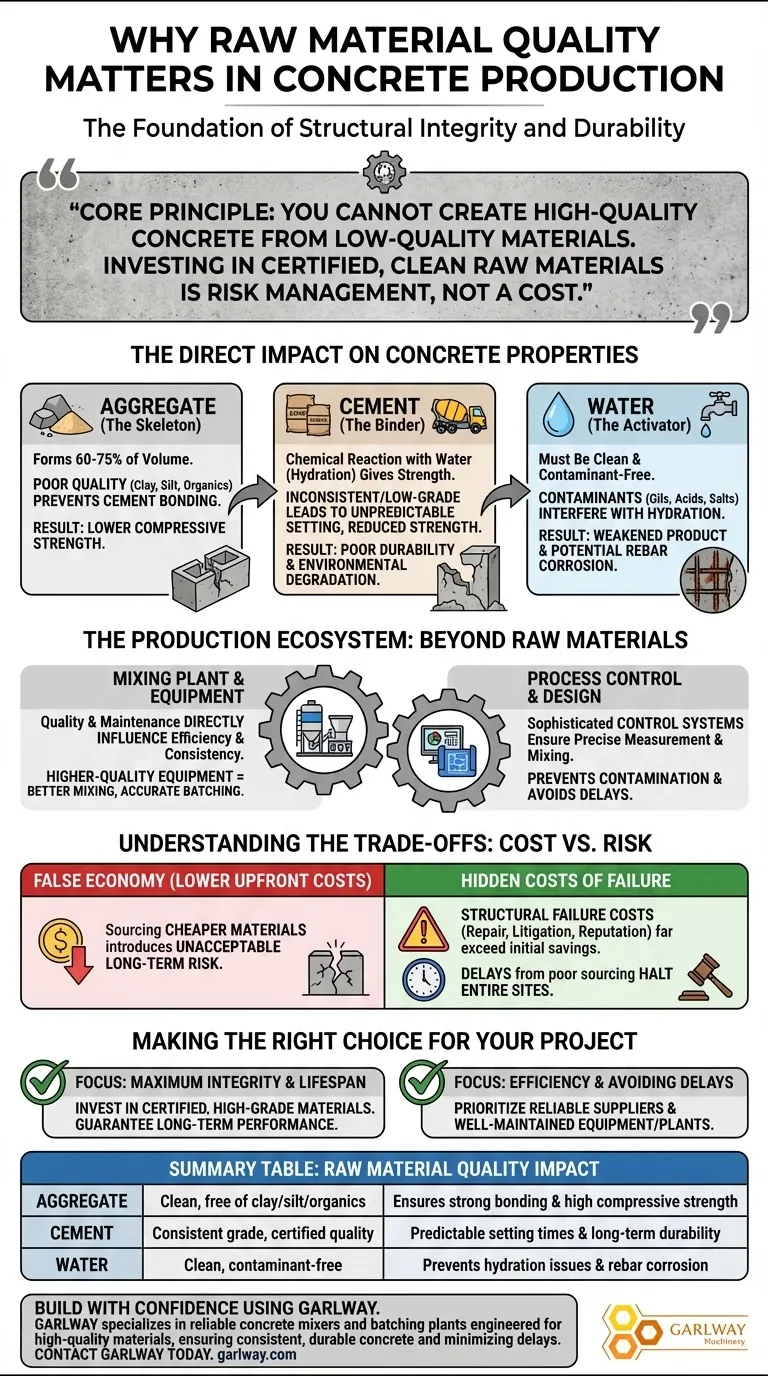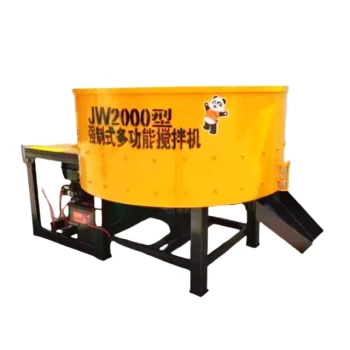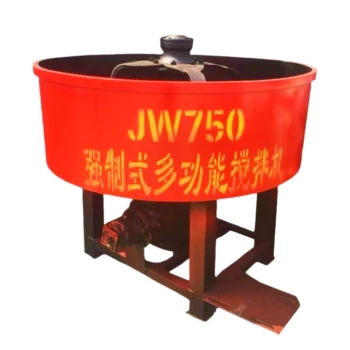First and foremost, the quality of raw materials is the single most important factor determining the final quality, strength, and durability of concrete. Using subpar materials directly translates to a subpar final product, creating structural risks and compromising the integrity of the entire construction project. The reliability of the end product is a direct reflection of the quality of its initial components.
The core principle is simple: you cannot create high-quality concrete from low-quality materials. Investing in certified, clean, and consistent raw materials is not a cost—it is the primary form of risk management in concrete production.

The Direct Impact on Concrete Properties
The final performance of concrete is a carefully balanced chemical and physical equation. Each raw material plays a critical, non-negotiable role. When one component is flawed, the entire system is compromised.
The Role of Aggregate
The aggregate (sand, gravel, crushed stone) forms the structural skeleton of the concrete, typically making up 60-75% of the volume.
Poor quality aggregate, such as that containing clay, silt, or organic matter, can prevent the cement paste from properly bonding to its surface. This results in significantly lower compressive strength.
The Function of Cement
Cement is the binder that holds the aggregate together. Its chemical reaction with water, known as hydration, is what gives concrete its strength.
Inconsistent or low-grade cement can lead to unpredictable setting times, reduced final strength, and poor durability, making the concrete more susceptible to environmental degradation.
The Importance of Water
The water used must be clean and free from contaminants like oils, acids, and salts.
Contaminated water can interfere with the hydration process, weakening the final product and potentially causing corrosion of the steel reinforcement within the concrete.
The Production Ecosystem: Beyond Raw Materials
While materials are foundational, they are part of a larger system. Even the best ingredients can be ruined by a flawed process or inadequate equipment.
The Mixing Plant and Equipment
The quality and maintenance of the concrete mixing plant directly influence production efficiency and consistency.
As noted in production analysis, higher-quality equipment from reputable manufacturers results in better mixing, more accurate batching, and higher overall efficiency.
Process Control and Design
Modern concrete plants rely on sophisticated control systems to ensure the precise measurement and mixing of materials.
A well-designed plant ensures that high-quality materials are handled properly, preventing contamination and ensuring they are readily available to avoid costly production delays.
Understanding the Trade-offs: Cost vs. Risk
The primary temptation is to reduce upfront costs by sourcing cheaper, lower-quality raw materials. This is a false economy that introduces unacceptable long-term risk.
The Hidden Costs of Failure
The cost of a structural failure, whether a small crack or a catastrophic collapse, far exceeds any initial savings on materials. This includes costs of repair, litigation, and reputational damage.
The Price of Delays
Ensuring that high-quality materials are well-prepared and readily available is crucial for preventing project delays. A single delayed batch due to poor material sourcing can halt an entire construction site, creating costs that dwarf material savings.
Making the Right Choice for Your Project
Your approach to material sourcing should be dictated by your project's primary goals.
- If your primary focus is maximum structural integrity and lifespan: Invest in certified, high-grade raw materials from trusted suppliers without compromise. This is the only way to guarantee long-term performance.
- If your primary focus is project efficiency and avoiding delays: Prioritize reliable suppliers with a proven track record for consistent quality and on-time delivery. Well-maintained equipment and a well-designed mixing plant are equally critical.
Ultimately, treating raw materials as the foundation of your project's success is the most reliable path to a safe and durable outcome.
Summary Table:
| Raw Material | Key Quality Factors | Impact on Concrete |
|---|---|---|
| Aggregate | Clean, free of clay/silt/organics | Ensures strong bonding & high compressive strength |
| Cement | Consistent grade, certified quality | Predictable setting times & long-term durability |
| Water | Clean, contaminant-free | Prevents hydration issues & rebar corrosion |
Build with Confidence Using GARLWAY
For construction companies and contractors, the quality of your concrete is non-negotiable. GARLWAY specializes in construction machinery, providing reliable equipment like concrete mixers and batching plants that are engineered to handle high-quality raw materials with precision. Our solutions help you achieve consistent, durable concrete batches, minimize project delays, and protect your structural integrity.
Don't let subpar materials or inefficient equipment compromise your project. Contact GARLWAY today to learn how our machinery can enhance your concrete production process and deliver superior results.
Visual Guide

Related Products
- HZS35 Small Cement Concrete Mixing Batch Plant
- HZS180 Ready Mix Concrete Plant for Foundations with Sand and Cement
- HZS75 Concrete Batching Plant Cement Mixer Price Concrete Mixer Bunnings Mixing Plant
- HZS120 Ready Mix Concrete Batching Plant Commercial Mud Cement Mixer
- JW1000 Mobile Cement Mixer Concrete Mixer Truck and Batching Plant
People Also Ask
- How can the discharging stage be optimized to improve overall concrete mixing efficiency? Fix the Mixer-to-Vehicle Handoff Bottleneck
- What are the components of concrete mixing? Master the Ingredients and Machinery for Perfect Results
- How does a small cement mixer improve time efficiency? Automate Mixing & Boost Productivity
- How are the roads within a concrete mixing station typically designed? Optimize for Safety and Efficiency
- How much does a batching plant cost? Uncover the True Investment for Your Project



















